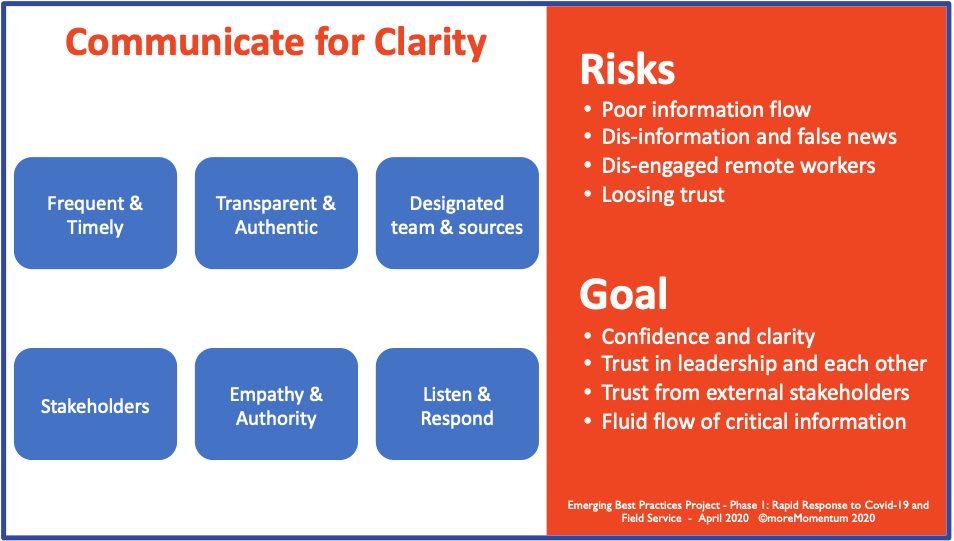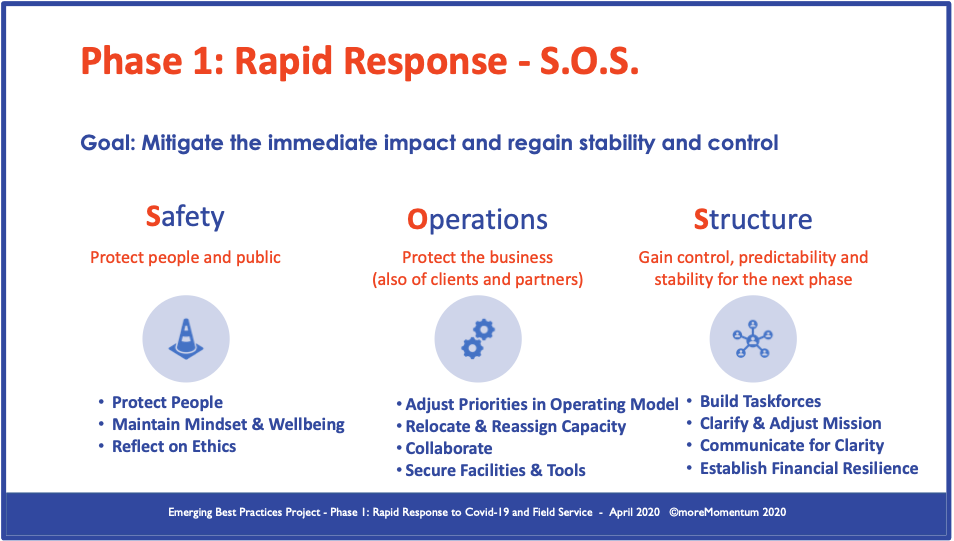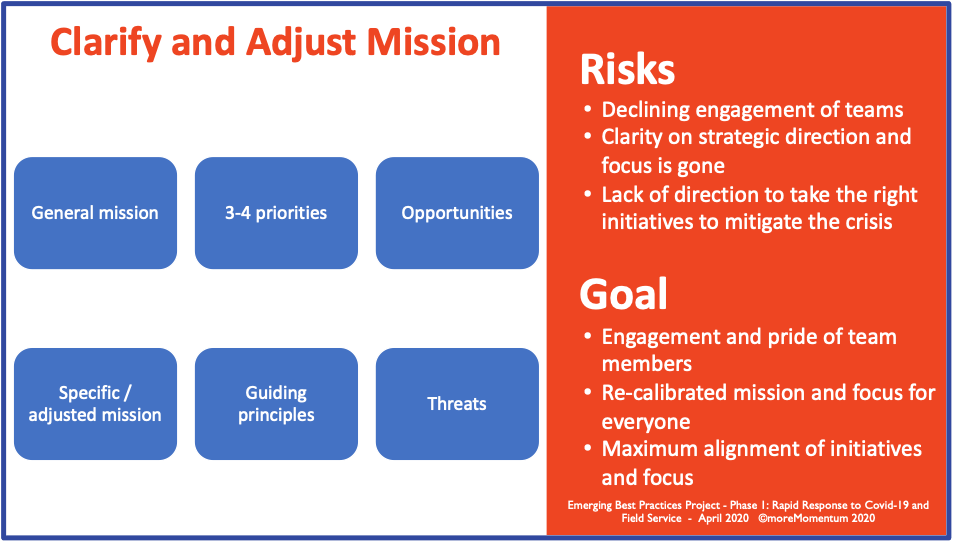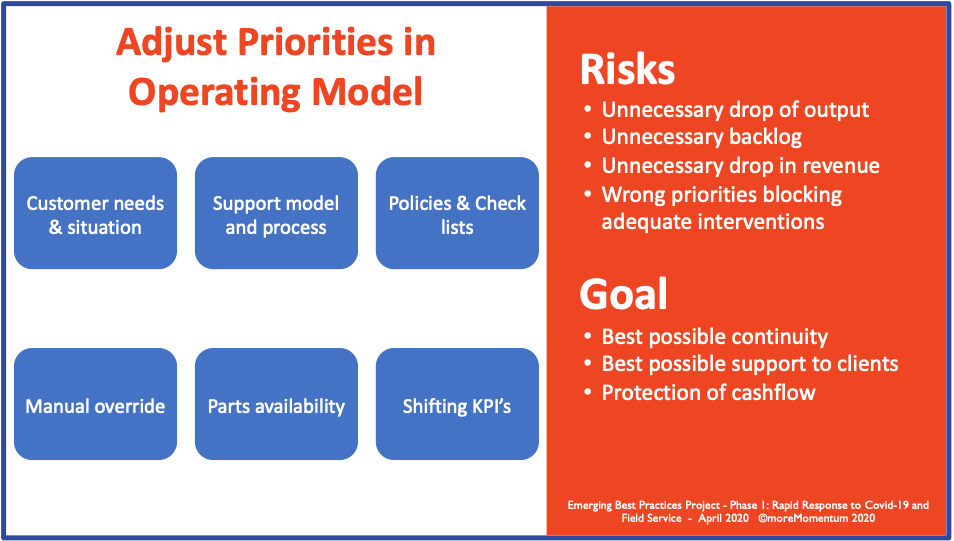Accelerating Your Customers' Adoption of Your Advanced Services
In the evolving service industry, rapidly adopting advanced services is crucial. Service providers must strategically address adoption barriers and...

This is a tough one. We already know that communication is important and often recognise that poor communication is the reason something fails. This observation does not solve the challenges. What is good communication?
In times of crisis, not only activities and operations are different from business-as-usual, also the way we manage our organisation and teams, as well as the way we take decisions and execute them will change.
This is one of the 3 main sections from the "Ultimate Guide for Phase 1 - Rapid Response to Mitigate the Immediate Impact of Covid"

Regarding Communicate for Clarity:
Risks to address
Let’s elaborate a bit on false news and disinformation.
In times of crisis we see a lot of concerns, fears and uncertainties. Under pressure, people tend to seek for handholds to increase a feeling of certainty. Poor communication will lead to people searching for other sources of information, fill in the blanks and let emotions become dominant when looking at information, opinions and decisions.
For most people falling into this trap, it is absolutely not intentional and by no means an act of sabotage or resistance. It is a natural defensive behaviour of human beings which you as leader need to avoid as much as possible.
Goal
Main aspects
Frequent and timely
In times of crises, you need to be around and very visible for your team members and other stakeholders. That is what they need and expect. So;
Transparent & Authentic
Transparent an authentic messages and ways of communication have a better impact and build more trust. Therefore;
Empathy and Authority
Always communicate with empathy and authority, in each message and communication again;
Designated teams and sources
With social media and many connected sources, everyone can share information and absorb information. There is a lot of false information and a wide range of hoaxes out there which can unnecessarily arouse concerns and fears of your clients, suppliers, shareholders and other stakeholders and keep them from being well informed.
Some good practices we saw are;
All Stakeholders
Ensure you are adequately addressing all relevant stakeholders and organise your communication sources and communication teams adequately. Some stakeholders to keep in mind;
Listen and Respond
Communication is not only about informing stakeholders. It is also about listing, learning, making them feel heard and capturing important information. The communication strategy should allow bi-directional communication via regular channels and events.
Some practical approaches being used are;
Download the full Guide for Phase 1 - Rapid Response
Subscribe for the our Impulse Letter
With regular updates about service news, trends and best practices.

In the evolving service industry, rapidly adopting advanced services is crucial. Service providers must strategically address adoption barriers and...

In times of crisis it is becomes even more critical to have a clear and compelling mission statement or strategic intent which provides a direction...

During a crisis many aspects of the normal way of working will not be adequate to continue business, or may simply not be possible to continue. Phase...